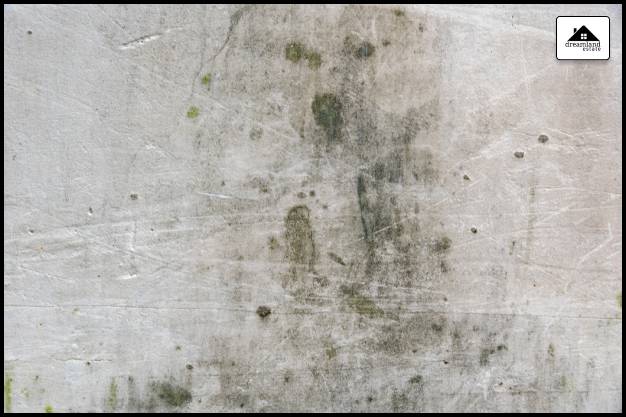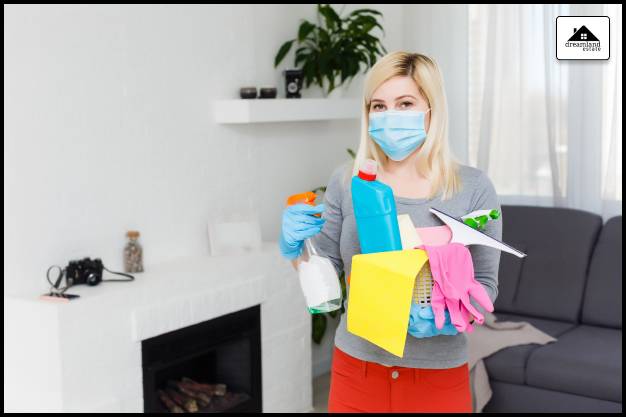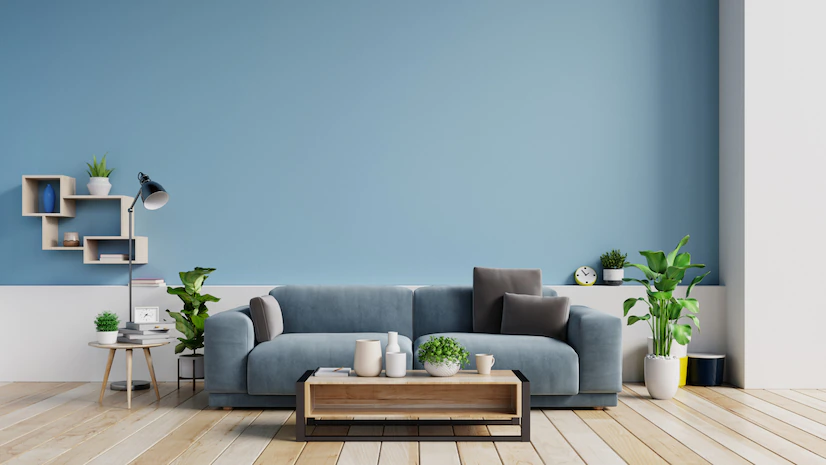Mold Prevention – How To Prevent Mold In Your Home?

You must have seen soft, whitish-green particles having a musty smell grown in different parts of your house. Commonly seen around your bathroom and kitchen, mold is a harmful fungus that can destroy organic things around your home. Molds are responsible for causing lots of damage to organic matter, like wood and other objects.
But what is mold? If mold is dangerous, what are the sources and causes, and why is mold prevention necessary? These are all the various things you will learn after going through this article. Therefore, if you have mold in your house, it’s time to exterminate them.
If you are thinking how to prevent mold when, you have landed on the right page. In this article, we will discuss what mold is, their types, and how you can prevent them properly.
What Is Mold?
Molds are a type of whitish-green fungus. This grows in moist and wet areas near or on organic substances as a microorganism. Organic substances can refer to food products, plants and flowers, and even wood on your house. These grow over time when organic objects stay wet for a long time, at suitable humidity levels.
Molds are dangerous for humans because they can spread through aerobic means. When mold matures, it sends out smaller molds that are hard to see with the naked eye. These molds can be dangerous because they can enter our lungs when we breathe them in and cause respiratory infections like asthma, allergies, and more.
In addition, molds grow faster in homes where a lot of people live. This is because we release a lot of moisture when we breathe. This makes the atmosphere better for them to thrive in. Coupled with this with raw food like vegetables and wooden objects, the mold will have a playground to thrive in. This is why mold prevention is necessary.
What Are Some Mold Symptoms?
You can identify mold infestations that require mold remediation in your home by keeping an eye out for these signs, and using a mold test kit on them:
1. Leaks In Plumbing Or Roof
Molds are a pretty common sight if you look at your ceilings, walls, and carpets near pipelines. If there is a leak in the pipes, mold will appear near it. You can notice it if you get a strong musty smell, along with stains near wet areas of the house.
2. Musty Smell From Basement
Basements are one of the most common places for mold to form. This is because we store a lot of old furniture, carpets, and other things in your basement. Since many pipelines run down to the basement, they are commonplace for mold to thrive. This is accentuated by the dark and damp atmosphere of the basements.
3. Moldy Doors And Windows
During the monsoon season, molds become pretty common because the water from the trains stick to our dross and windows. Over time, this becomes molds if they do not dry fast enough. This is why mold prevention is useful during wetter seasons.
4. Mold On Walls, Ceilings, And Carpets
Molds can appear near walls and carpets if the floor beneath them is wet. You might see dark stains near the angular bottom sections of the walls, where the wall touches the ground. If water stays in such areas for some time, molds can form there pretty easily.
Causes Of Mold In Our Homes
The main causes for mold prevention being important for our homes are:
1. Poor Air Ventilation
If our rooms have poor air ventilation, then molds will be able to thrive in such rooms the best. You must have proper air circulation in your house to prevent mold from growing. However, keeping a room dark and damp, and without any sunlight will cause mold to form pretty quickly.
2. Wet And Damp Areas
Wet and damp areas anywhere on the house can be an open invitation for mold to live and grow. This is because water, or moisture, is the life source of molds. Without water, they cannot survive. In addition, they need darker, damp rooms where the sunlight doesn’t reach easily.
3. Unkempt Food
Food that is kept in the open without any cover will attract the unwanted attention of flies, and mold. Food like bread is most susceptible to mold formation because it can rot very easily if kept in the open, even for a day. Mold prevention can become difficult if there is open food lying in your kitchen.
4. Mold Spores
The most common source of mold, believe it or not – is molds themselves. Molds can multiply very easily. Therefore, if mold starts forming in your house once, it will multiply very fast and send out small mold spores all across the room. These spores can then settle down near wet, damp areas of the room and start multiplying there too. This makes mold prevention more difficult.
5. High Humidity
High humidity, mixed with optimal temperatures can also be a cause of mold formation. According to experts, temperatures ranging anywhere between 72 to 82 degrees Fahrenheit, or 22 to 32 degrees celsius are perfect for mold infestations. Couple this with humidity levels between 30% and 60%, and you have turned your home into theirs.
Sources Of Mold In Your House
Now that you know the causes of mold in your homes, you must be wondering, which places in your house require the most amount of mold prevention? While there are many rooms in your house that are like that, the main sources of mold are:
1. Attic
Attics is a common source of mold infestation because it is almost always dark, with very little sunlight. Moisture can enter your attic by:
- Leaking ventilation and drainage pipes, with condensation on them during winters
- Leaky exhausts and vents
- Faulty insulation
- Furnaces and attic heaters
- AC vents in the attic
- Wet and damp objects in the attic
2. Basement
Moisture can accumulate in your basement from the following sources:
- Leaky drainage pipes
- Clogged drains
- No damp proofing on the exterior
- Wall cracks where moisture can seep in
- Improper air circulation
- Inadequate sunlight
- Water condensation on surfaces of objects during winters
- Accumulation of dirt and dust during monsoon season
- Melting snow after winters
3. Crawlspace
Many houses have a smaller crawl space instead of a basement. These crawlspaces can become a great place for moisture to seep in from the following sources:
- Poor ventilation
- Lack of sunlight
- Barren floor with no cement
- Leaky drainage pipes
- Dryer vents that blow out humid air
- Rainwater
- Holes in walls through which drain water can creep in from poorly constructed exterior walls
- Condensation due to damp and moisture on furnace ducts
4. Bathroom
Let’s face it, bathrooms are probably the wettest areas in the entire house. Therefore, this place has one of the highest chances for mold to grow. This is further heightened during winters when we take hot baths. Some of the main sources of mold in bathrooms are:
- Leaks and overflows in-wall pipes
- Steam during hot baths
- Running water from tap drips and floor water
- Cracked toilet seats
- Wet tissues from waste bins
- Steam moisture in ceilings and cold surfaces of taps and vanity closets
5. Kitchen
It is no surprise that we are bound to find mold in our kitchen because a lot of food materials and water are present at all times.
This is one of the most dangerous places for mold to thrive because if they start multiplying, their spores can come in contact with our food before we eat it. This can lead to a host of gastric problems that are bad for our health. Common kitchen mold sources are:
- Leaks in sinks and pipes
- Stored liquid drinks that are improperly sealed
- Steam and vapor while cooking
- Humid and wet cabinets and shelves
- Poor exhausts and ventilation systems
6. Heating, Ventilation, And Air Conditioning (HVAC) Systems
A lot of moisture can accumulate in our HVAC systems, which can become sources of mold-like:
- Blocked or clogged air filtration systems
- Condensation on metallic and wooden parts of machines during winters
- Water drips on fiberglass insulation
- Less airflow from grilles
- Duct joint leaks
- Faulty thermostats
- Saturated air released from HVAC condensers
7. Home Exterior
Home exteriors are highly susceptible to mold infestations because they get the full blunt of dust, humidity, and moisture in the air. You might see many older homes have mold infestations in the walls that face their backyards. They mainly come from:
- Rainwater
- Clogged drains
- Leaky roof gutters
- Moisture from trees too close to the walls
- Faulty ventilation ducts
- Damp garages with a lot of water spills during car washes
Mold Prevention – Steps That You Need To Take
If you want to take serious steps for mold prevention, then here are some great methods to apply:
1. Identify Areas Prone To Mold Growth
The first step that you need to take is to identify the sources from which molds can multiply from. This involves checking out areas that are most likely to get moisty in your house. This includes rooms like your bathroom, basement, attic, and kitchen. Use a mold prevention spray from time to time in these rooms.
2. Make Sure Wet Areas Are Always Dry
After you have detected the areas that are wet, you will need to keep them dry at all times. Therefore, dry these areas whenever they get wet. Do this more often during monsoons and winters. In addition, give special attention to wt carpets, since they are prone to mold infestations. Dry them within 24 to 48 hours after they get wet. Use bathroom mold prevention sprays from time to time.
One place in our house that attracts a lot of moisture is the roof gutters and drain outlets. These places almost remain wet throughout the year and are a great place for mold to thrive in. Clean them with bleach on a frequent basis to make them clean and disinfected. Do so more often during winters and monsoons.
3. Ensure Your House Is Well Ventilated
Proper ventilation and adequate sunlight are the main methods to apply for mold prevention. Make sure areas like your bathrooms, kitchens, basements and attics have proper ventilation setup. Even big windows are great ventilators since they allow sunlight to come in and make the room warmer, making it uncomfortable for the mood to survive.
4. Use Mold Resistant Tools
If you are planning to build a new home or renovate your old room, use a mold prevention chip, and mold resistant paint equipment to be safe from the start. Use mold prevention spray for drywall and sheetrock for your walls since they do not retain moisture and remain dry throughout.
You might be asking, how do I fix smelly tap water? Smelly tap water is an indication that there might be a mold on the water supply pipes from the tanks. Get a specialist in to disinfect these pipes so that clean water can flow once again.
5. Always Monitor Indoor Humidity
You can always monitor indoor humidity with machines that measure for implementing mold prevention techniques in the air. Always monitor it and check whether the humidity level is below 50% or not.
If this is the case, then try to identify the source of the problem. They can be linked to certain machines in the room, like a humidifier. Dry the condensation off immediately before it attracts molds.
While you are learning about how to prevent mold, here are some questions that can help to answer your queries and guide you. For mold prevention, use undiluted complex vinegar on hard surfaces like wood, floors, and walls. Mold prevention is best done with vinegar because it has antibacterial and antifungal properties in its composition. Mold prevention is best done with chemicals like bleach and vinegar. Air purifiers can help with mold prevention because they absorb humidity from the air and keep everything cool and dry. To prevent mold growth on the walls, you can ensure proper ventilation, reduce humidity, and clean surfaces regularly. Moreover, you must look for the leaks. You can also use moisture-resistant paints. Mold prevention is not an easy task. Since mold can form easily on wet surfaces of walls and even wooden furniture. Mold causes high amounts of moisture in damp and dusty places. This is why they are common in bathrooms and kitchens since a lot of water is used. You can prevent mold by ensuring that your house is well ventilated, along with using mold resistant paints and furniture in your house. Use a humidity checker to make sure that none of your rooms are too humid! Read Also: Frequently Asked Questions (FAQs):
Say Bye-Bye to Molds!
















Leave A Reply